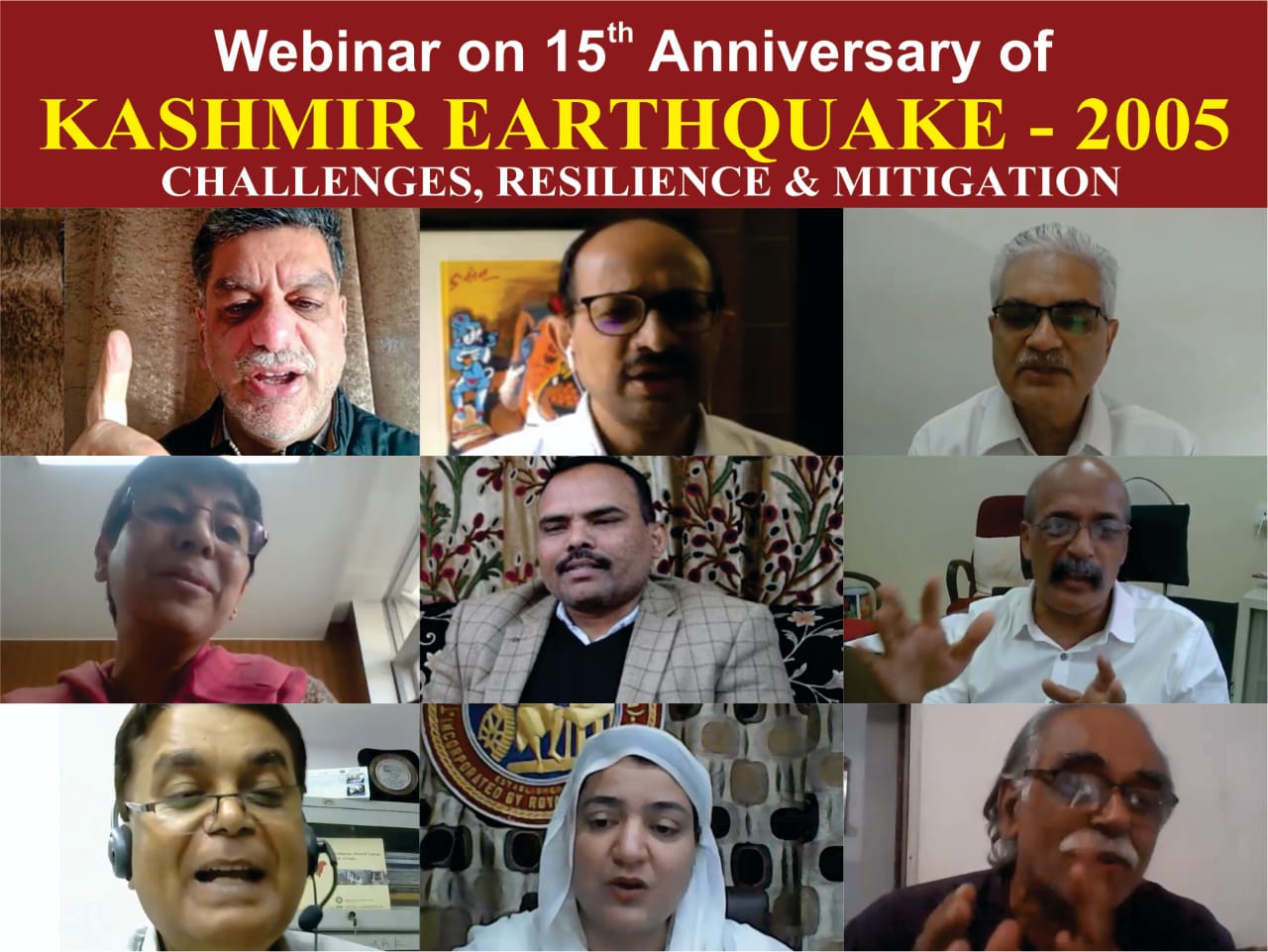All constructions to be earthquake resistant, life line buildings to be retrofitted.
Srinagar 08 October (KNB): In connection with the 15th Anniversary of Kashmir Earthquake-2005, a webinar on Challenges, Resilience & Mitigation was jointly organised by National Institute of Disaster Management & The Institution of Engineers (India), Jammu & Kashmir State Centre, Srinagar, in collaboration with the Divisional Administration, Kashmir & Indian Red Cross Society, J&K Branch, Srinagar.
The webinar was inaugurated by Mr. Pandurang K. Pole Divisional Commissioner Kashmir, who stressed on the need to enforce building codes and implement building bye laws in J&K, not just in urban areas, but also in rural areas, so that all new constructions are earthquake resistant. He stressed on the need to utilise the local traditional construction knowledge, as well as new technologies to make all structures safe. He proposed that a few important buildings will be identified as life-line buildings, on a pilot-basis, in vulnerable districts, for their retrofitting in order to make them earthquake resistant. He emphasised on ensuring that all engineered and non-engineered structures are made earthquake resistant.
He also shared his experiences as District Magistrate of Latur Maharashtra, and spoke about the Latur Earthquake of 1993, where the affected villagers were shifted to new locations instead of repairing and reconstructing in-situ the existing damaged structures, and instead ex-situ new safe structures were taken up, adhering to all planning processes, which proved to be a best practice in the State. He impressed upon all the Officers and participants to ensure that appropriate measures are taken to make J&K safe.
Er. Aamir Ali, Chairman IEI J&K State Centre, Srinagar welcomed the participants and said that 2005-earthquake was the severest earthquake encountered in our lifetime, which resulted in massive destruction on both sides of the Line of Control. He said that post earthquake, innovative and effective relief & rehabilitation measures were taken by the Government to establish Institutional mechanism, to deal with disasters, including setting up of State Disaster Management Authority, Divisional & District Disaster Management Authorities and State Disaster Response Force. However, the lessons learnt from the earthquake of 2005 were not effectively implemented to enhance capacities to minimise risk and vulnerability due to earthquakes.
The panellists included Mr. Kamal Kishore, Member National Disaster Management Authority, Dr. Vineet K. Gahalaut, National Geophysical Research Institute Hyderabad, Ms. Tinny Sawhney, Aga Khan Development Network, Dr. Rajendra Desai, National Centre for People’s Action in Disaster Preparedness Ahmedabad & Dr. C.V.R Murthy, Professor IIT Madras. Mr. Kamal Kishore, Member NDMA discussed challenges faced in Institutional mechanism for financing reconstruction, rehabilitation and recovery. He emphasised on utilising appropriate technology for owner driven constructions and ensuring quality checks and control.
He further suggested that while considering resettlement of populations from vulnerable areas, their livelihood should also be considered. He also spoke about capacity building for Earthquake resistant structures, and scaling up training of Engineers and Masons for servicing the demand. He suggested that post disasters not only structures should be built back better, but also the livelihood and social equity in economic terms of the affected population.
Dr. Vineet K. Gahalaut from National Geophysical Research Institute, Hyderabad described the damage pattern of Kashmir Earthquake-2005, and defined variability in earthquake processes in the Himalayan Region, with special reference to earthquake processes in Kashmir Region. He highlighted about strain accumulation, subsurface structures, scenario generation, building code enforcement, retrofitting and outreach.
Ms. Tinny Sawhney from Aga Khan Development Network, shared her experiences about challenges faced during reconstruction & rehabilitation after the Kashmir Earthquake. She mentioned about the masons training programme for earthquake resistant construction techniques and technical assistance & monetary subsidy given for reconstructing earthquake resistant structures.
Dr. Rajender Desai explained how low-cost earthquake resistant technologies and retrofitting of existing structures can be achieved. The webinar was moderated by Er. M. Aaquib Sultana Waheed Deva, Honorary Secretary, IEI-JKSC.
The webinar was attended online by senior Government Officers from various Departments, including experts, professionals and more than 300 participants from the community etc. The webinar lasted for over 3 ½ hours and was highly appreciated.(KNB)

